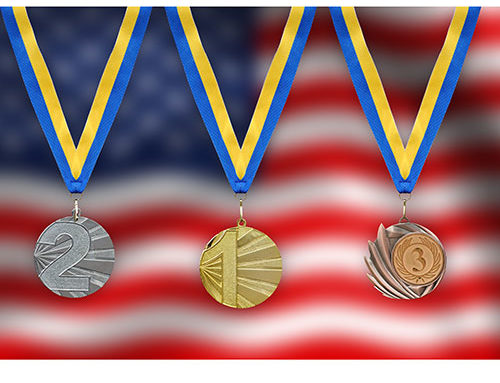Who would have made the 2008 Men’s Olympic team under this Proposed Selection Points System?
If you didn’t read my last post that outlined in detail my proposed Selection Points System, I would suggest going over that first so that this one makes sense.
I’m a firm believer that if you don’t agree with the way something is done, don’t just sit back and complain about it – do something! I believe the most effective thing you can do is devise a well-thought out plan for how to fix the problem, and if you present it thoughtfully and to the right people, it just might make a difference! And it’s one thing to make suggestions that sound good on paper…it’s an entirely different thing to actually put them into practice and watch them work.
I went back to the results of the 2008 USA Nationals and 2008 Olympic Trials – both of which were considered part of the “Olympic Selection Process” for both the men and the women. The sad reality that both you and I know is that, at least on the women’s side, the real “selection” didn’t take place at these competitions at all – it took place at the secret selection camp that occurred long after the Trials were over. The men’s selection committee, on the other hand, announced the Olympic team (at least the original one) the very weekend of the Olympic Trials…a very admirable step in the right direction.
I took the results and simply plugged them into my points system to see who would have made the Olympic team using my objective criteria. The men’s results, which I have below, were quite fascinating! First, remember that there were two athletes with unique circumstances:
**David Sender was the national all-around champion but sprained his ankle in training before the Olympic Trials and was unable to compete. After much deliberation by the selection committee, he did not end up on the Olympic team…even as an alternate. Since he DID compete in 2 out of the 4 days of competition, his scores WOULD BE ELIGIBLE for the final points rankings under this proposed system. Remember, though that David’s scores would not displace an athlete who did compete all four days from the rankings. We would calculate the rankings of all the other competitors first, and then simply compare David’s scores with the appropriate target scores to determine his points. In other words, Sender’s scores would not actually be thrown into the individual event or all-around rankings, but his “Olympic team points” would be calculated as if they were.
**Paul Hamm competed in Day 1 of the USA Championships (and was easily in first place), but had to drop out when he broke his hand. Since he DID NOT compete in at least two out of the four days of competition, he would be ineligible for the Olympic team under this system, and thus we won’t consider him for any Olympic team points.
The men’s results at the end of the Olympic Trials included ALL FOUR SCORES for each gymnast on each event (two from USA’s and two from Trials, with the results WEIGHTED; 40% USA’s and 60% Olympic Trials). This is the way the MPC set up the guidelines for the gymnasts’ placement, so these weighted results were the ones I used for my points system. So I simply used the weighted final scores for each athlete on the individual events as well as in the all-around to calculate the Olympic team points for each gymnast.
Are you ready for the men’s results??? Let’s go!!! As my system dictates, I gave points to the top 4 finishers on each event; remember, the points are equal to the exact amount each gymnast scored above 5th place on that event. I added up each gymnast’s points for each event to come up with the event totals in the chart below:
Men’s 2008 USA Championships + Olympic Trials
Using Weighted Scores (40% USA’s + 60% Olympic Trials)
Individual Event Points
(Top 4 on each event, based on the score difference from 5th place)
| Rank | Gymnast | Individual Event Points |
| 1 | Joseph Hagerty | 1.335 |
| 2 | Kevin Tan | 1.24 |
| 3 | Jonathan Horton | 1.03 |
| 4 | Morgan Hamm | 0.985 |
| 5 | David Sender | 0.945 |
| 6 | Justin Spring | 0.78 |
| 7 | Sean Golden | 0.665 |
| 8 | Alexander Artemev | 0.6 |
| 9 | Raj Bhavsar | 0.51 |
| 10 | Yewki Tomita | 0.5 |
| 11 | Guillermo Alvarez | 0.365 |
| 12 | David Durante | 0.215 |
So if we stopped after just giving the individual event points, the Olympic team, in rank order, would have been:
1. Hagerty
2. Tan
3. Horton
4. Hamm
5. Sender
6. Spring
Alternates: Golden, Artemev, Bhavsar
But we’re not done! We have to add in additional points for the top 3 all-arounders, based on how high they scored above 4th place. The top 3 All-Arounders after the Trials were Horton, Hagerty, and Bhavsar, and then I took David Sender’s all-around scores from USA’s and calculated points for him too, WITHOUT displacing Horton, Hagerty, or Bhavsar. This means that four all-arounders receive points rather than three.
Individual Event Points + All-Around Points
(Top 3 all-arounders, based on the score difference from 4th place)
| Rank | Gymnast | Individual Event Points | All-Around Points | Total Olympic Team Points |
| 1 | Jonathan Horton | 1.03 | 1.035 | 2.065 |
| 2 | David Sender | 0.945 | 0.635 | 1.58 |
| 3 | Joseph Hagerty | 1.335 | 0.225 | 1.56 |
| 4 | Kevin Tan | 1.24 | — | 1.24 |
| 5 | Morgan Hamm | 0.985 | — | 0.985 |
| 6 | Justin Spring | 0.78 | — | 0.78 |
| 7 | Sean Golden | 0.665 | — | 0.665 |
| 8 | Raj Bhavsar | 0.51 | 0.145 | 0.655 |
| 9 | Alexander Artemev | 0.6 | — | 0.6 |
| 10 | Yewki Tomita | 0.5 | — | 0.5 |
| 11 | Guillermo Alvarez | 0.365 | — | 0.365 |
| 12 | David Durante | 0.215 | — | 0.215 |
Final Olympic Team in Rank Order:
1. Jonathan Horton
2. David Sender
3. Joseph Hagerty
4. Kevin Tan
5. Morgan Hamm
6. Justin Spring
Alternates: Sean Golden, Raj Bhavsar, Alexander Artemev
Crazy!!! David Sender’s total put him in second! First, the intention here is not to bring back any more heartache to David Sender or even suggest that the selection committee made a mistake. Let’s not forget they did put out a team that shocked the world by winning a bronze medal in Beijing. The point of all this is to inspire a new way of thinking regarding the selection of these teams…could this system be used just as objectively as the all-around scores that used to determine our Olympic teams years ago?
As we all know, Morgan Hamm ended up dropping off the Olympic team. Assuming that still would have happened, the selection committee would then have had to choose between Golden, Bhavsar, and Artemev. They really would have had to go with Artemev, considering the pommel horse deficiency – which would have been there with ANY team the USA could have put out on the floor, but particularly after losing Morgan Hamm. Golden or Bhavsar would have been put in if we lost one of our ring guys, like Horton, Tan, or Sender.
Of course we should always double check to make sure this team could have put up three strong gymnasts on all six events in the team final. The answer is yes! We’ll assume that Artemev replaced Hamm:
FX: Horton, Hagerty, Sender
PH: Artemev, Tan, Hagerty
SR: Tan, Horton, Sender
V: Sender, Horton, Spring
PB: Spring, Horton, Hagerty
HB: Horton, Spring, Hagerty
I think that team would have been equally as strong – or perhaps slightly stronger – than the one that won the bronze in Beijing. The only difference, of course, was using Sender instead of Bhavsar…not to take anything away from Bhavsar, who did a sensational job in Beijing! And of course we will never know if Sender’s ankle would have been healthy enough to compete on, and especially at 100% on floor and vault.
So what do you think…does the system work? Don’t worry…I’ll have plenty of more examples to show you if you’re not convinced yet. We’ll do the women’s 2008 Olympic selection next!



[…] This post was mentioned on Twitter by American Gymnast. American Gymnast said: Putting the Proposed Points System to the Test: Share This Hide Sites $$('div.d385').each… http://bit.ly/9Y8mDQ […]